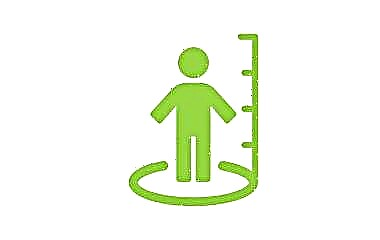Coxsackie virus (VK) belongs to the genus enteroviruses. Typical types of viruses live in the human digestive tract. Viruses are highly contagious and spread from person to person. Unhygienic living conditions can increase the spread of viral infections.
Coxsackie viruses were discovered in 1948-1949 by Gilbert Dalldorf, a scientist working in the Department of Health in Albany, New York.
Dalldorf was looking for a cure for polio. While conducting experiments on newborn mice, the scientist discovered viruses that often mimic mild or non-paralytic poliomyelitis. The groups of isolated viruses were eventually named Coxsackie (a small city in New York State where the first samples were obtained).
Pathogen characteristics
VK belongs to the picornavirus family and to the enterovirus genus, which also includes poliovirus and echovirus. Enteroviruses are among the most significant and common pathogens in humans. VCs share many characteristics with poliovirus. Along with the control of poliovirus infections in most of the world, much attention has been paid to the understanding of non-poliovirus enteroviruses such as VC.
Structure
All viruses have three or two parts. This includes:
- genetic material, DNA or RNA;
- a protein coat (capsid) that protects genetic information;
- a lipid coat (supercapsid) is sometimes present around the protein coat when the virus is outside the cell.
VK is a linear single-stranded RNA without a lipid envelope.
Virus types
There are two types of VK:
- VC type A leads to sore throat and blisters or rashes on the skin of the hands, feet, and mouth;
- due to VC type B, epidemic pleurodynia and inflammatory processes in the chest are possible.
Both types of VC can cause meningitis (inflammation of the lining of the spinal cord and brain), pericarditis (inflammation of the bursa), and myocarditis (inflammation of the heart muscle). Some types of the virus can cause type 1 diabetes.
Virus in the external environment
VC are resistant to the action of known antibacterial drugs, 70% alcohol, 5% lysol. They can be stored frozen for many years. They are inactivated by heating (50 C for half an hour), drying, ultraviolet irradiation. They are sensitive to formalin and hydrochloric acid.
Infection routes

VK is transmitted from person to person. The pathogen is present in the secretions and body fluids of infected people. The virus can be spread by contact with respiratory secretions from infected patients. If an infected person rubs his nose with a runny nose and then touches a surface, that surface will become infected with the virus and become a source of infection. The pathogen is transmitted if another person touches a contaminated surface and then touches their mouth or nose.
People with conjunctivitis spread the virus by touching their eyes and then contacting other people or surfaces. VK is also excreted in the feces, which can serve as a source of transmission of the pathogen among young children.
Viruses initially multiply in the upper respiratory tract and distal part of the small intestine. It was found that viruses replicate (duplicate) in the submucous lymphatic tissue and spread into the reticuloendothelial system (a system consisting of reticular tissue, a special type of connective tissue that lines and supports the spleen, lymph nodes, and some other organs). Further spread to target organs occurs after the second entry of the virus into the bloodstream.
The period of incubation and contagiousness
From the moment VC enters the body and until symptoms develop, it takes about 1 - 2 days.
Patients are most infectious in the first 7 days of illness, but VC is present in the body up to a week after the disappearance of manifestations. The pathogen can live longer in the child and in those with weak immunity.
What diseases does Coxsackie virus cause in adults and children?
More than 90% of VC infections are asymptomatic or cause non-specific febrile diseases. In newborns, they are the most common cause of fever during the summer and fall months. In 13% of newborns with fever, enterovirus infection was noted in the first month of life.

Aseptic meningitis
People with meningitis may experience the following symptoms quickly or gradually:
- fever and chills;
- nausea and vomiting;
- ailments;
- headaches;
- neck pain;
- sensitivity to light;
- symptoms from the upper respiratory tract.
VK type B infection is more commonly associated with meningitis than type A VC.
Lethargy and movement disorders occur in the early stages of the disease and are observed in 5-10% of patients with enterovirus (provoked by the Coxsackie virus) meningitis. Children with aseptic meningitis do not have long-term neurological deficits. Longer periods of fever and headache may occur in adults than in infants and children.
Encephalitis
Encephalitis is an uncommon manifestation of CNS infection, although it is sometimes seen in association with aseptic meningitis. Enteroviruses account for approximately 5% of all encephalitis cases. Coxsackie virus types A9, B2 and B5 have been associated with encephalitis. In rare cases, it mimics encephalitis secondary to herpes simplex virus.
Enteroviral vesicular stomatitis.
Vesicular enteroviral stomatitis (hand-foot-mouth syndrome) often affects children and spreads easily to other family members. People have inflammation in the throat and mouth. Vesicles (small blisters) coalesce and form large blisters, then ulcers form on the mucous membrane of the cheek and tongue. In 75% of patients, peripheral (arms and legs) skin lesions appear simultaneously. The vesicles usually do not itch, which helps distinguish them from the lesions caused by chickenpox.
Rash in children with enterovirus infection is often accompanied by fever, odonophagia (pain when swallowing) and dysphagia (disorder of the act of swallowing).
Myopericarditis
Myopericarditis (inflammation of the heart muscle and outer membrane) is possible at any age, although it tends to develop in adolescents and young adults. Enteroviruses are responsible for half of all cases of acute viral myopericarditis.
Symptoms of pericarditis may be absent, but heart failure and death may also occur. Between these two extremes, most patients have:
- dyspnea;
- chest pain;
- fever;
- malaise.
Symptoms may be preceded by upper respiratory tract disease for 1 to 2 weeks.
Epidemic pleurodynia
It is a muscle disease and there is a suspicion of viral muscle invasion causing inflammation. However, direct histological data are lacking. Epidemic pleurodynia is usually associated with outbreaks of group B Coxsackie infection.
Patients have fever and severe paroxysmal pain in the chest and upper abdomen.
All patients recover completely within 1 week.
Acute hemorrhagic conjunctivitis
Pain and swelling of the eyelids and subconjunctival hemorrhage (bleeding under the conjunctiva) are present.
Photophobia, foreign body sensation, fever, malaise, and headache are possible. These symptoms usually resolve spontaneously within one week.
Laboratory diagnosis of the disease
The final diagnosis can be made based on the isolation of the virus in cell culture. The cytopathic effect (destruction and functional pathology of cells infected with the virus) usually appears within 2-6 days. Samples are usually taken from stool or rectal swabs, but may be collected from the mouth and throat early in the disease. False positive culture results are possible since excretion (release) can occur up to 8 weeks after the initial infection.
For meningitis, examination should rule out bacterial etiology. Diagnosis requires an assessment of cerebrospinal fluid. The virus can be isolated by cell culture (30-35% sensitivity) or PCR (66-90% sensitivity).
A CT scan of the head without contrast may be performed at the initial presentation of meningitis and / or encephalitis to rule out hemorrhage, increased intracranial pressure, or mass lesions.
Echocardiography is done to assess overall heart function and valve abnormalities in patients with myopericarditis and heart failure.
An electrocardiogram can show rhythm problems caused by an enlarged heart and can help determine if the pericardium is inflamed.
To exclude streptococcal pharyngitis and / or tonsillitis, a throat swab is taken for cultivation.
HIV testing is always advisable in patients with nonspecific febrile illness or rash.
EEG can be used to detect the presence and localization of seizure activity.
Treatment of the process caused by the Coxsackie virus
There is no specific treatment for this typically self-limiting disease (symptoms resolve without specific antiviral treatment in about two to ten days). Symptomatic treatment with paracetamol, which reduces fever, is now recommended. Mouthwashes and sprays can help reduce mouth discomfort. Avoiding dehydration is also recommended, but sour juices will irritate mouth sores and cold milk will provide some relief.
Relatively rare complications of VC affecting the heart and brain require special individual treatment (it is possible to use human immunoglobulin or specific antiviral drugs, although such treatment is rare and has not yet proven its safety and effectiveness in serious diseases).

Complications of infection
Complications of aseptic meningitis include:
- lethargy;
- convulsions;
- to whom;
- movement disorders (5-10%).
Complications of myopericarditis include:
- effusion (abnormal accumulation of fluid) in the pericardium;
- arrhythmia (violation of the rhythm of the heart);
- heart block (pathology of the passage of an excitation wave from the atria to the ventricles);
- valve dysfunction;
- dilated cardiomyopathy (stretching of the heart cavities).
Rare complications of acute hemorrhagic conjunctivitis include keratitis (inflammation of the cornea of the eye) and motor paralysis.
Prevention.
VK prevention is difficult, but possible. In children, adhering to strict hygiene precautions is practically difficult, but following simple rules (washing hands after changing diapers and touching infected skin) by adults will reduce the transmission of the virus to other family members.
Regular cleaning of items that children come into contact with (toys, pacifiers, and anything they might put in their mouth) can also reduce transmission of the virus.
In general, hand washing is the best prevention method.
Pregnant women should avoid contact with infected people. Some studies suggest that VC can cause defects in fetal development.
Infection with VC makes a person immune to re-infection with a virus of the same type. For example, a person may become immune to B4 VK but still be susceptible to all other types of virus.
Conclusion
VK is distributed all over the world. VK infection occurs in all age groups, but is more common in young children and infants. The baby is at a higher risk of infection during the first year of life. The incidence rate drops significantly after the first decade.
Patients should be clearly aware of the need for hygiene to avoid transmission of infection.



